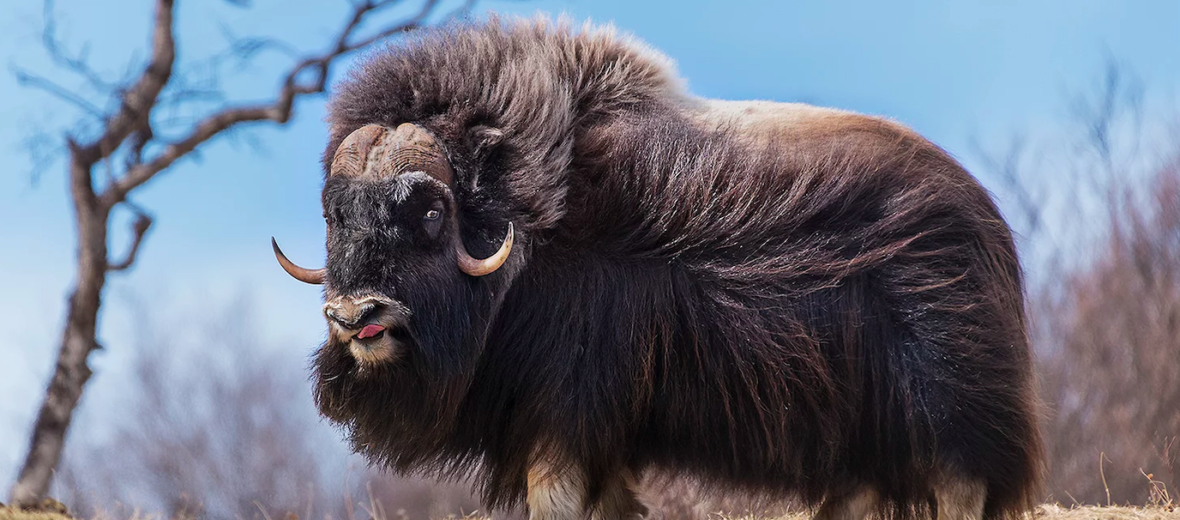
The musk ox resides in the frozen Arctic tundra areas of North America and Greenland. At one point these beasts were wiped out of Europe and Alaska due to over-hunting. Their numbers are starting to bounce back after being successfully reintroduced. These large herding critters are part of the Bovidae family. Even though they look like cattle, they are actually more closely related to sheep and goats than cows. There are 2 known subspecies of musk ox, the Greenland (aka the White-Faced) that are located in Greenland and the Canadian Arctic and the Barren Ground, found in mainland Canada. They are listed as Least Concern by the IUCN.
First the Stats…
Scientific name: Ovibos moschatus
Weight: Up to 900 lbs.
Length: Up to 8.2 feet
Height: Up to 4.9 feet, at the shoulder
Lifespan: Up to 20 years
Now on to the Facts!
1.) These lumbering beasts are herbivorous (eat plant matter) consumers that eat lichen, moss, roots, flowers, grass, reeds, and sedges.
2.) They are social among themselves and form herds that consist of 10 – 20 critters. Winter herds can gather over 70 oxen of both male and female.
3.) Their primary predators are polar bears, grizzly bears, and Arctic wolves.
4.) Males secrete an oily, musky substance from underneath their eyes to attract females. Hence their name.
5.) When threatened, adult oxen will quickly gather into a defensive circle of tightly packed beasts, all facing outwards, with the young and sick hidden away in the middle. “Come at me, bro!”
But wait, there’s more on the musk ox!
6.) Musk oxen have 2 layers of fur. The outer layer is called “guard hairs” and the under layer of shorter hairs is called “qiviut”. They shed much of their thick hair during the summer season.
7.) The qiviut layer can be used to spin a type of wool that is 8 times warmer than that of a sheep’s. It is one of the warmest natural fibers in the world!
Did you know…?
As large as they are, they can still get going. A musk ox can reach running speeds of up to 37 miles per hour!
8.) Musk oxen and caribou are the only hoofed mammals in the Arctic region to have survived the end of the Pleistocene Era. This era came to an end around 10,000 years ago. The other mammals of this class were hunted to extinction long ago. Sadly.
9.) During the “rut”, males compete for the rights to breed with local females by swinging their heads, strutting, emitting a lion-like roar, and ultimately charging into each other head-on. They don’t damage each other’s heads due to the thin pocket of air between their brain and skull. I guess you can technically call them air heads.
10.) The gestation (pregnancy) period lasts 8 – 9 months and produces a single calf. The young are nursed for up to a year but begin to eat grass as soon as a week after birth.
But wait, there’s still more on the musk ox!
11.) The Inuit name for the musk ox is umingmak, meaning “the bearded one”.
12.) A farm raised musk ox can produce enough qiviut to spin 300 – 500 feet of wool each year.
Now a Short Musk Ox Video!
Also, check out the Critter Science YouTube channel. Videos added frequently!
Want to suggest a critter for me to write about? Let me know here.



